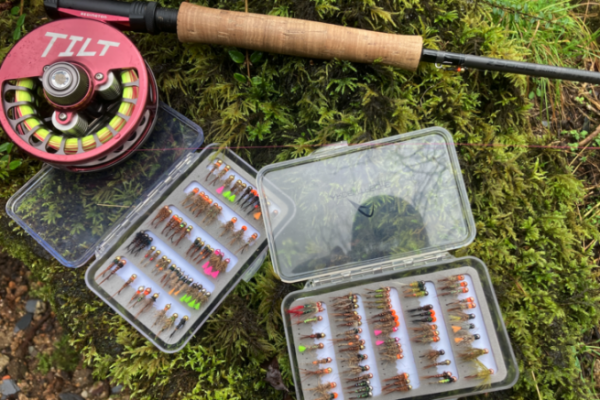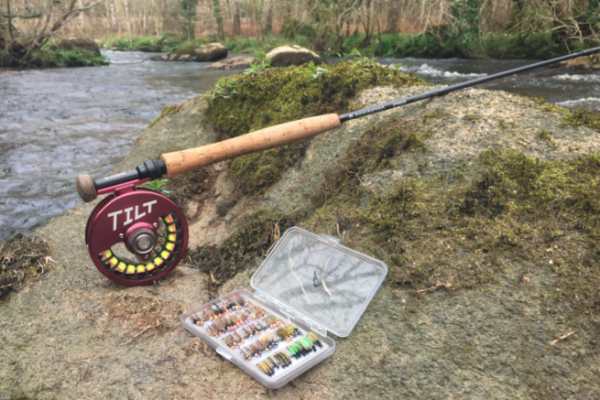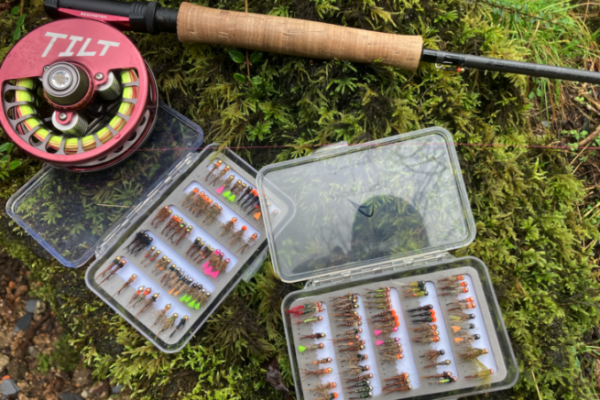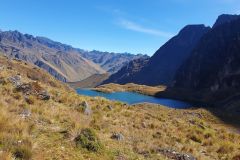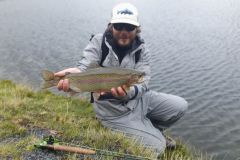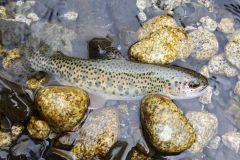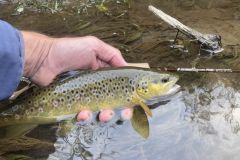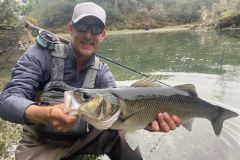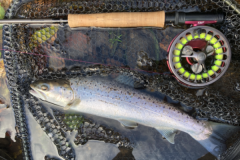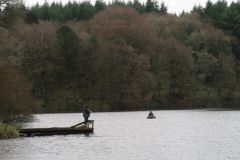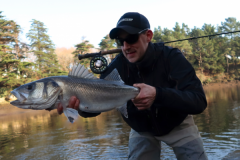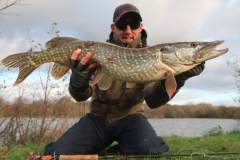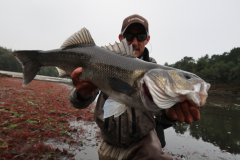Choosing nymphs
As with dry fly fishing, there are some so-called "must-have" models. These are flies you can trust to fish with confidence, because it's important to be reassured when starting out in a particular technique.
Before looking at the models, you need to take into account a number of variables that will need to be adapted in order to equip yourself with a box of nymphs suited to the conditions.
Instead of having a wide range of nymph models without knowing when to use them, it's best to start with tried-and-tested flies that you can tie on your leaders with your eyes closed! Tying them in different sizes and weights and changing a few details will give you enough flies to get off to a good start.
It is therefore crucial to have different sizes of hooks and therefore flies, but also weights adapted to each season, water level and fish activity.
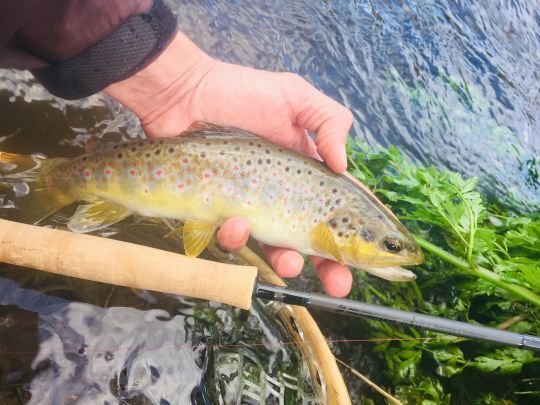
Nymph size
At the start of the season, we tend to fish bigger for several reasons. The first is that trout have just come through a long winter and need to regain their health. The cold waters at the start of the season will encourage them to take big bites. So don't hesitate to use flies on 10 and 12 hooks, or even down to 14 in some cases.
Then, as the water warms up and temperatures rise, the fish will gradually take on "standard" nymph sizes, and we can gradually move on to size 14 and 16 imitations. At the end of spring and during the summer, the insects hatching and present in the river will be smaller and smaller, with a few exceptions, in which case the angler will also have to present the fish with suitable flies, i.e. size 16 to 20 or even smaller.
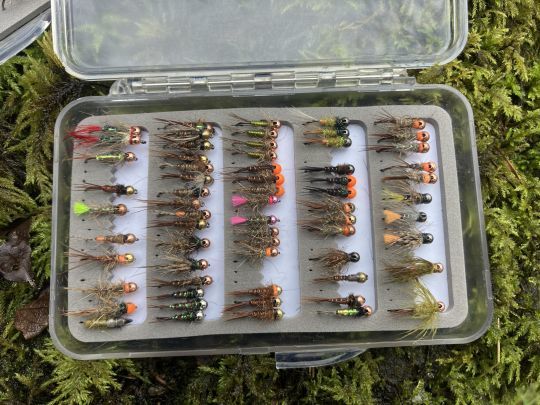
Nymph weight
The weight of the nymphs is essential for accurate fishing and good drifting. The size and weight of the flies must therefore be adapted to the depth and speed of the current, as well as to the type of position.
Two flies are often used for spinning nymphs (NAF). A point fly and a nymph (lighter and often smaller) in the stem. The weight of both flies must be taken into account.
When using a single nymph, for various reasons, the weight of the nymph will often be easier to find, and the size of the log more important, than when using two nymphs.
Nymph weight depends mainly on ball diameter and material. They come in sizes from 4.5 to 1.5, in either brass or tungsten (twice as heavy).
Bead size is often chosen according to hook size.
- Hook size 10: 4.5/4 and sometimes 3.5
- Hook size 12: 4 to 3 depending on model
- Hook size 14: 3/ 2.5
- Hook size 16 and smaller: 2 and 1.5
Ball color
In addition to the nymph's body color, the color of the bead is also important. Every angler has his or her own preferences and beliefs, but there are a few principles to keep in mind:
- Early season: orange, silver, and colored (pink, chartreuse, etc.)
- Clear water: copper ball, gold
- Dark weather, deep water: silver
- Sunny weather: gold and copper, black
- Difficult fish: dull ball with little shine (black, brown, white, etc.)
There are also many bead colors to choose from, some of which may be a little fanciful. But you need to test and analyze the results, then make your selection.
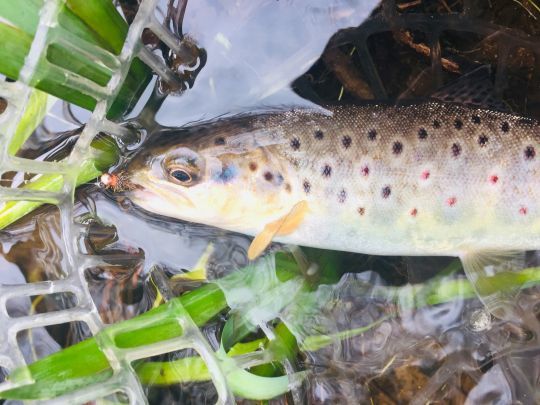
Ball shape
There are also a number of different bead shapes, depending on the use and model of fly you're tying or buying.
- Split ball: for jig and perdigone hooks
- Classic ball (drilled in the middle): for mounting on straight hooks
- Drop or offset ball: for mounting heavier nymphs on small hooks
- Bille javi: for mounting heavier nymphs
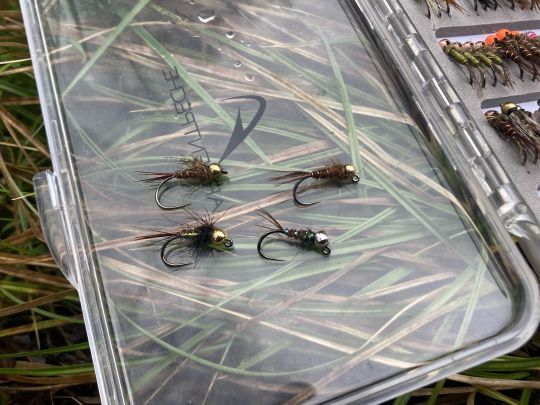
Jig or straight hook?
Straight or "classic" hooks are the most commonly used to rig most nymphs. However, for several years now, jig hooks have been very often used for nymph fishing with wire, as they allow good hook clearance and present the nymph with the point upwards. This limits snagging, especially at the start of the season when fishing close to the bottom.
As a tippet fly on a two-fly rig, it's a real advantage. The stem fly is often mounted on a straight hook.

 /
/ 